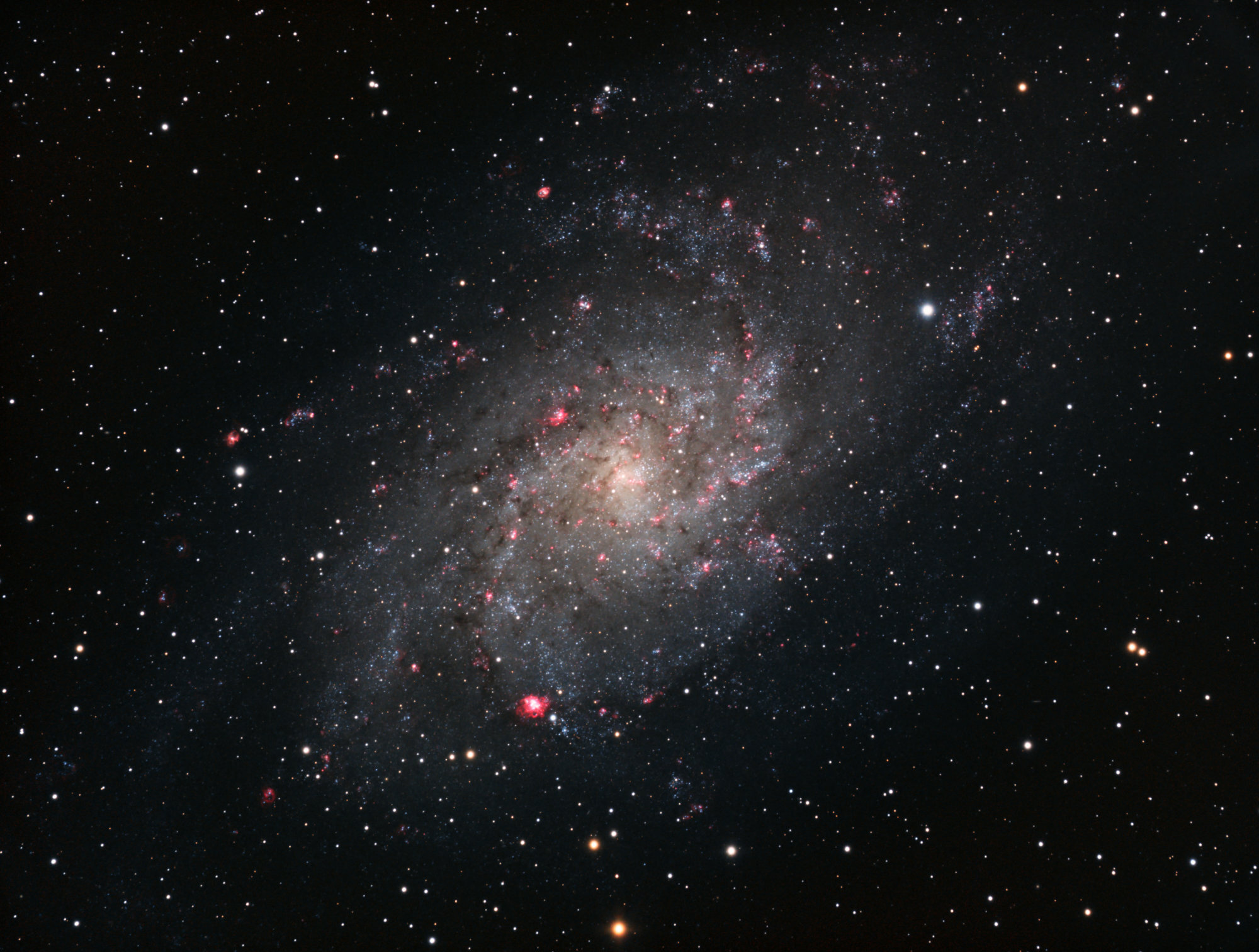
Images
Sh2-248 - Jellyfish Nebula
The beautiful Jellyfish nebula (IC443) in the constellation Gemini. Here in a wide-field shot together with reflection nebula IC444. The narrow-band images are processed in the SHO Hubble palette.
Moon
On the very first night testing out the new Mewlon-180c, some short videos were shot of the Moon. After processing the video-files using the new software PlanetarySystemStacker, this moon image came out. Certainly a motivation to do a lot more moon photography and test the Mewlon on some of the planets.
Caldwell 4 - Iris Nebula
An image of NGC7023, captured on three different occasions, two(!) years apart. The bright blue reflection nebula is referred to as Iris Nebula, named after the similarly blue flower. With more than 17h of exposure also the darker nebulae are visible.
NGC7822 - Cederblad 214
In the constellation Cepheus this large area of nebulosity can be found with a massive star, 100,000 times bigger than our Sun, in the center that lights up the whole cloud. The nebula is registered as NGC7822.
Sh2-240 - Spaghetti Nebula
Sh2-240, also known as the Spaghetti Nebula is a very large and faint object that requires long exposures with a wide-field telescope. A reducer on the FSQ-106 in combination with full-frame camera and > 17h of exposure resulted in the following image.
M13 - Hercules Cluster
M13, or the Hercules Cluster, is a relatively small, but densely packed globular cluster. A perfect target to test out a new long focal length telescope, the Takahashi Mewlon 180c, in combination with the QHY268c, an APS-C sized OSC camera.
Sh2-155 Cave Nebula
An old 2019 dataset of Sh2-155, also known as Cave Nebula, was finally processed to this image in SHO Hubble palette. The nebula itself is only a small object in a much larger region of all sorts of emission, reflection and dark nebulosity.
C/2021-A1 Comet Leonard
Bright comets are seldom appearances in our solar system. Comet Leonard was one of the most striking examples this year. Just days before it would become at its brightest and before it would cross the ecliptic, this image was shot in the early morning hours.
Caldwell 34 - Veil Nebula
The Veil Nebula in HOO was chosen as the first object to photograph using the new RST-135E mount. This ultra-portable mount is super-easy to setup and can be used without counterweights or balancing. First light and lessons learned on a beautiful target.
Sh2-190 - Heart and Soul Nebulae
A new reducer for the FSQ-106 turned the scope into a 380mm at f/3,6 astrograph. Together with the ASI6200MM a perfect combination to photograph the beautiful Heart and Soul Nebulae in narrowband.
Sh2-129 - Flying Bat and Squid Nebula
Recently (2011) the Flying Squid Nebula has been discovered right within the Flying Bat Nebula (Sh2-129). The very weak OIII object is hard to image and with almost 30h of total exposure this has been one of the most challenging objects so far.
Perseïd Meteors
One of the most well-known meteor showers, the Perseïds is visible around August 11-13 every year. This year, in a first attempt to photographing meteors, to photography setups were used to create a composite image of some of the meteors on August 11.
Sh2-229 | C31 - Flaming Star Nebula
IC405 is an interesting combination of both a reflection and emission nebula that emits strongly in H-alpha. The double-star AE Aurigae shines brightly in the middle and illuminates vast clouds of hydrogen gas.
Markarian’s Chain
In the middle of a crowded area of galaxies, known as the Virgo Cluster, one can find a string of Galaxies, commonly known as Markarian’s Chain. Eight galaxies, including the rather bright elliptical galaxies M84 and M86 make up this remarkable object.
M35
A nice combination of two star clusters. M35, an open cluster in the constellation Gemini. Only a few hundred stars. The second cluster is NGC2158. It is much further away and therefore looks much smaller. Its old red stars make a nice contrast with the bright blue stars of M35, creating depth.
IC1805 - Heart Nebula
A large emission nebula in the constellation of Perseus catalogued as IC1805, but mostly known as Heart Nebula, due to its characteristic shape. Processed using the Hubble palette. This is the first image taken with the ASI6200, 62MP full-frame camera.




















